Kegworth air disaster: 30th anniversary service held
- Published
The day of the “harrowing” disaster is remembered and wreaths are laid for those who died
Survivors and relatives of some of the 47 people killed in one of the worst British air disasters have gathered for a service to remember the dead.
A Boeing 737, carrying 126 people, crashed on to the M1 in Leicestershire on 8 January 1989.
Witnesses described the "devastation" as the plane plunged into the embankment and smashed into pieces.
Reverend Lauretta Wilson said the "fateful night" had never been forgotten in Kegworth.
British Midland flight 92 had been diverted to East Midlands Airport after leaving Heathrow for Belfast when one of the plane's engines caught fire.
The pilots then mistakenly switched off the wrong engine on the way to the airport.
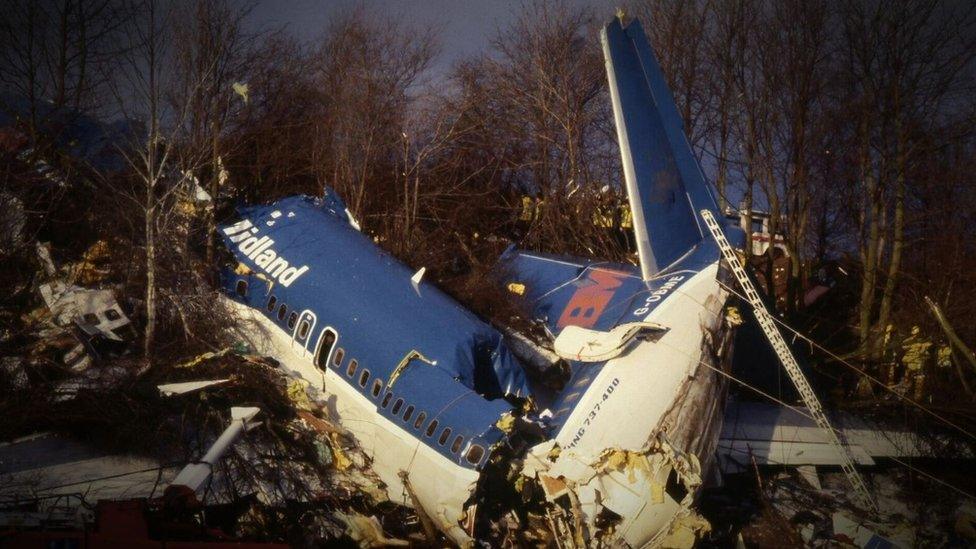
The pilots shut down the wrong engine and the plane crashed on the M1 in Leicestershire
Witnesses said the plane "bounced" over the motorway, hit the central reservation and crashed into the embankment.
About 150 people attended the service at St Andrew's Church in the village, where floral tributes were laid outside.
Opening the commemorations at the 30th anniversary service, Reverend Wilson said: "Kegworth has never forgotten that fateful night on January 8 1989.
"Whatever our motivations, it is good to have the opportunity to remember and honour those who lost their lives.
"The dreadful event shook all of our communities."
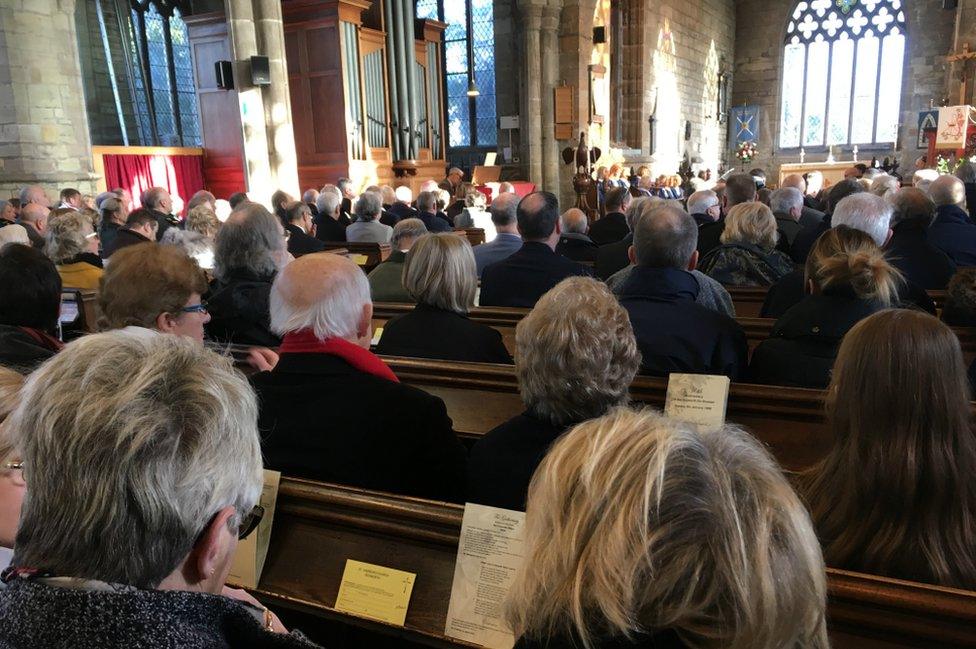
Survivors and the families of those killed attended the service at St Andrew's Church
Wreaths and flowers have also been placed at Kegworth Cemetery to remember those who died.
Members of the emergency services, who were first at the scene when the aircraft crashed, also attended.
Archive footage shows disaster aftermath

'I'm sitting here alive'
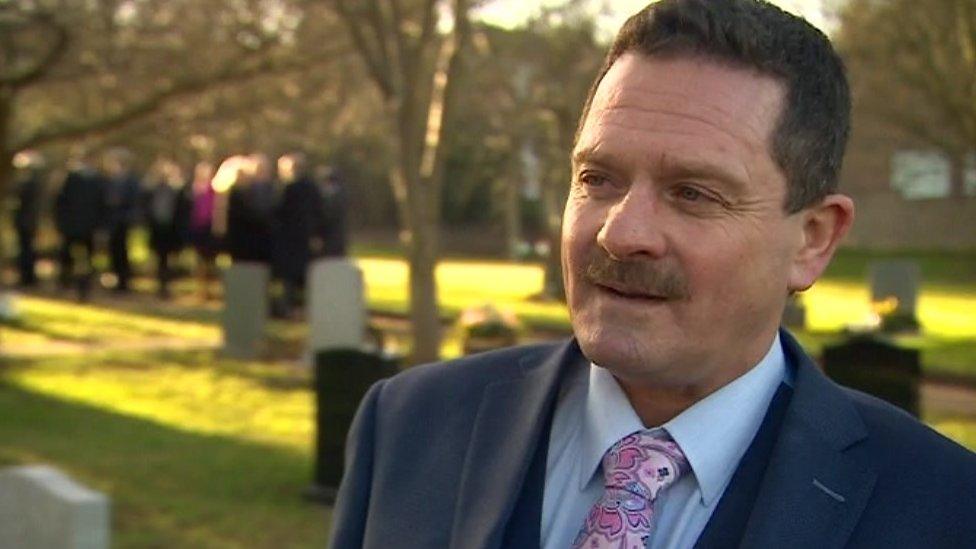
Leslie Bloomer was returning home from the London Boat Show
Leslie Bloomer, 57, was on his way home having visited the London Boat Show with his friends, Mervyn Finlay and Desmond Clarke, who also survived.
"We shouldn't have even been on that flight. We got to Heathrow early and I changed the flights from 21:20 to 19:20 BST," he said.
Describing the crash, he added: "We could see small bits of debris, sparks coming out of the left-hand engine.
"You could feel [the plane] wavering as the pilot struggled to keep it straight and then it thumped on the ground with an awful bang.
"When it came to a halt I suddenly realised 'I'm sitting here alive'… There was a hole at the side of the plane which I started to clamber out through.
"This guy came walking up and just grabbed me and carried me down the banking."

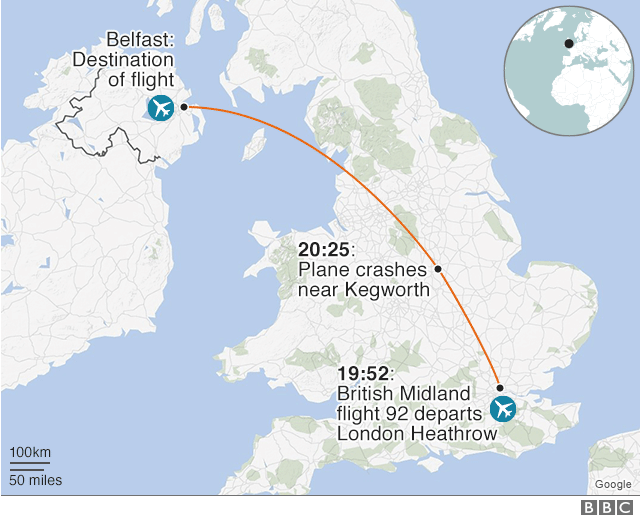
News of the plane crash was broken on BBC Two by Michael Buerk

'Matter of life and death'
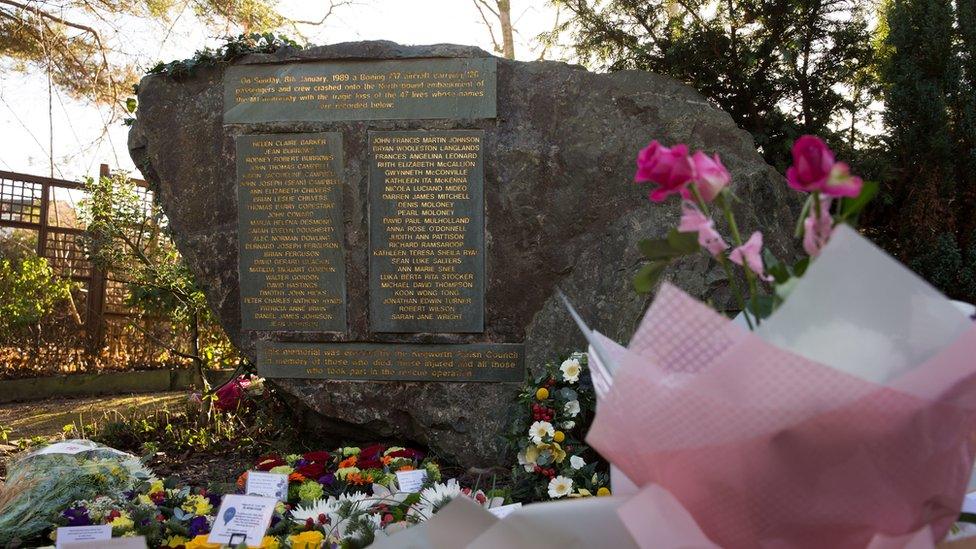
Physiotherapist Helen Esplen, who was 25 in 1989, was travelling home on the M1 following a holiday when the plane crashed.
She was one of the first people at the scene and managed to get to the cockpit where Captain Kevin Hunt and co-pilot David McClelland were trapped.
Mrs Esplen helped to save the life of Mr McClelland, spending two hours keeping him conscious.
She said: "Every time he shut his eyes I kept talking to him; he would have known so much about my life. Later, he wrote a lovely letter thanking me."
Once the pilots were freed from the cockpit she was passed through the fuselage to help trapped passengers.
She attended two teenage boys, one of whom died. The other she believes may have been Stephen McCoy.
"I was used to seeing trauma and blood, it was a matter of life and death, and hopefully I saved lives," she said.
She received a Royal Humane Society award for her actions.

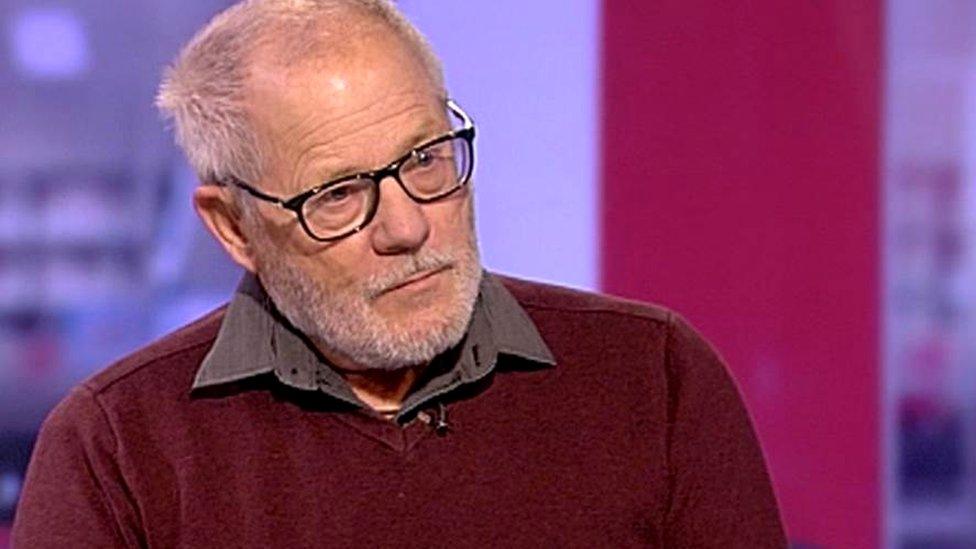
Barry Bingham said he and his lifeboat colleagues climbed up the wreckage to help with the rescue
A lifeboat crew, from Withernsea, Yorkshire, were travelling back from a training exercise when they saw the plane coming down.
Barry Bingham, who with his colleagues helped with the rescue, said "A lot of sparks came out from the engines and that was the point where one of them blew up.
"The wreckage was in three parts. There were flames coming up from the engine."
Mr Bingham said the only person they saw "was a chap who was wandering around the motorway in a uniform".
"It was only later I realised it was a steward out of the aeroplane, he fell out the back," he added.

As it happened - British Midland Flight 92

British Midland Flight 92 crashed into the M1 about 45 minutes after taking off from Heathrow
It was travelling at about 130mph (209kmph), when it hit a field on the southbound side of the motorway before plunging through trees and smashing into the embankment on the opposite carriageway
The front section of the plane - carrying about 15 people - broke away from the main body on impact
Inside, all but one overhead locker sprang open and luggage flew through the air, causing head injuries to almost every passenger, and killing some of them
Chairs shot forward, crushing people between the seats and causing horrendous leg wounds
The plane had come down yards from the village of Kegworth, just a few hundred feet short of the runway at East Midlands Airport
Moments earlier, two motorists had seen sparks flying from the jet as it descended towards them. Realising it was about to crash, they managed to slow traffic using their hazard-warning lights

Follow BBC East Midlands on Facebook, external, on Twitter, external, or on Instagram, external. Send your story ideas to eastmidsnews@bbc.co.uk, external.
- Published8 January 2019
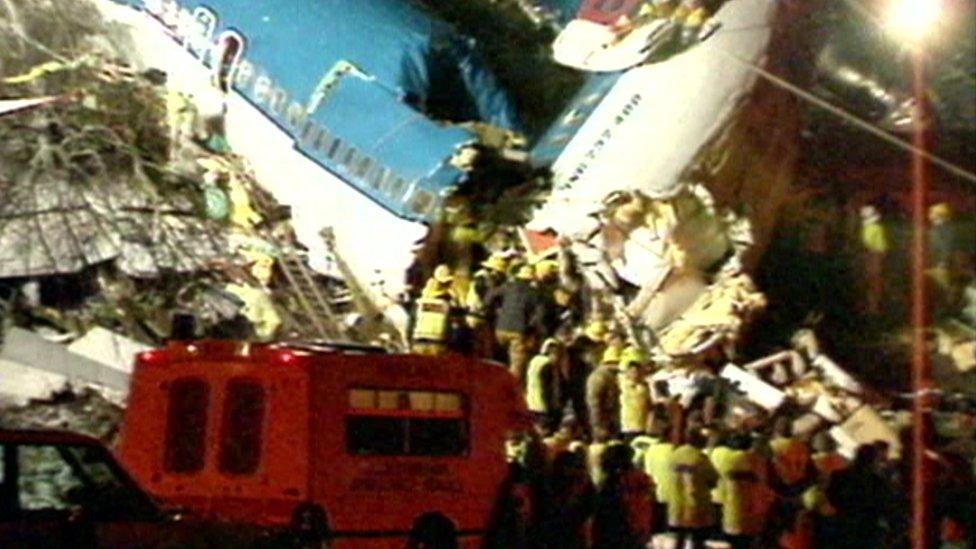
- Published6 January 2019
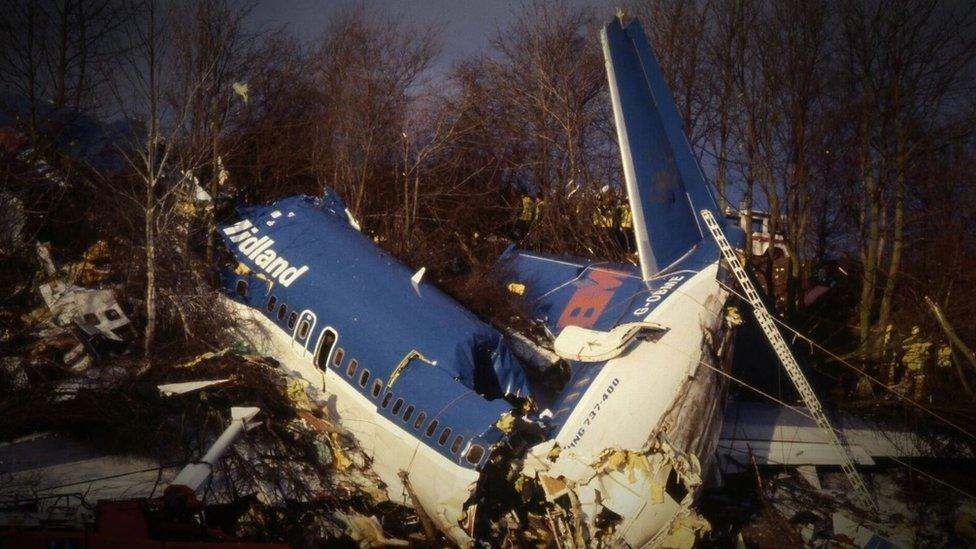
- Published8 January 2014
